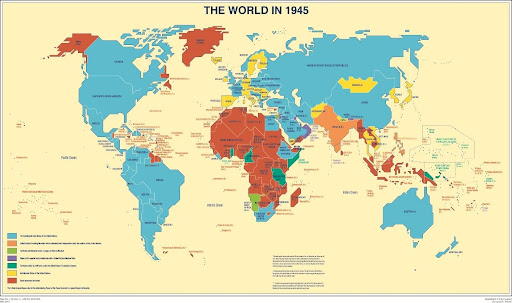Chapter 9: South Asia
Identifying the Boundaries
The South Asian realm extends from Afghanistan in the west to Bangladesh in the east. The Indian Ocean forms the principal physical boundary in the south, the Himalayan range marks the north-north-eastern boundary. The Arabian Sea borders the realm to the west, and the Bay of Bengal borders it to the east. The western boundary of the realm is the desert region where Pakistan shares a border with Iran (Figure 9.1).
This realm has immense cultural diversity, suggesting centuries of tremendous foreign influences unhindered by its formidable mountain ranges and vast deserts. The South Asian realm is the birthplace of two of the world’s great religions, Hinduism and Buddhism, but there is also a large Muslim presence, and large groups of various other religions also are found in this realm. Hinduism, Islam, and Buddhism are the top three religions of South Asia. Islam prevails in Pakistan and Bangladesh. Hindu religion prevails in India and the northern half of Sri Lanka, but Islam is the largest minority religion in India. After Indonesia and Pakistan, Indian Muslims form the third-largest Muslim population in the world. Buddhism is found in southern India and in the southern half of Sri Lanka. In addition, Sikhism is a major religion in the eastern Punjab region, which is located on India’s northwestern border with Pakistan.
The countries included in the South Asian realm are India, Pakistan, Bangladesh, the Himalayan nations of Bhutan, and Nepal; a much smaller Indian Ocean Island of the country of Maldives; and a larger tropical country of Sri Lanka, which is located at the tip of southern India. India is the giant of the realm. The Himalayas, separating South Asia from East Asia along the border of China’s autonomous region of Tibet, are the highest mountains in the world and the dominant physical feature of the northern rim of South Asia. From east to northwest, Nepal, Bhutan, India, and Pakistan share the Himalayas. Farther north along the Himalayan range, the traditional region of Kashmir is divided between India, Pakistan, and China. On the opposite side of the Himalayas are two island countries off the coast of southern India.
The realm of South Asia is highly diverse and populated, with about one-and-a-half billion people representing a wide range of ethnic, cultural, and religious groups. The diverse population has been brought together into political units that have roots in the realm’s colonial past. British colonialism had a significant impact on the realm; its long-term effects include political divisions and conflicts in places such as Kashmir and Sri Lanka.
Current globalizing forces are compelling South Asian countries to establish a trade network and institute economic policies among themselves. South Asia is not one of the three main economic core areas of the world; however, it is emerging to compete in the world marketplace. Some would call India a part of the semi-periphery, which means it is not actually in the core or in the periphery but displays qualities of both. All the same, India remains the dominant country of South Asia and shares either a physical boundary or a marine boundary with all the other countries in the realm.
The realm once shared a boundary with the USSR (Union of Soviet Socialist Republics). During the Cold War, the countries of the realm, particularly India and Pakistan, were either in the shadow of the superpowers and had to engage in diplomacy to balance their relationships with the Soviet Union and the United States. India aligned itself more with the Soviet Union, while Pakistan was more aligned with the United States (Figure 9.2).
The United States has had a major impact on the affairs of the South Asian realm, even though it is physically located on the other side of the world. It has a long history of involvement in South Asian affairs, primarily through Afghanistan. The United States has been at war in neighboring Afghanistan since 2001 and prior to that, the U.S. was heavily involved in the Afghanistan-Soviet conflict resulting from the invasion of Afghanistan by the USSR in the late 1970s. The United States has also been a major economic trading partner with the countries of South Asia.


